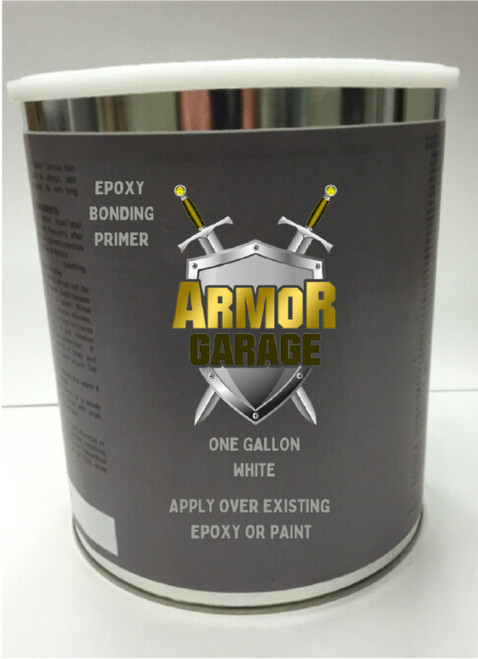This is a 100% Novolac Epoxy and Aggregate Mix that forms a tough durable Acid & Chemical Resistant Mortar for filling and repairing larger areas. Will not crack or chip out as other brands are prone to do and is not prone to failure due to corrosive chemical and acid exposures. This is a great concrete repair product for any area with exposure to corrosive chemicals. Apply with trowel up to 1" thick. Fill in larger cracks up to 3" wide by 1" deep. Use foam backer rod for deeper cracks or can be applied in 3/4" layers. Another alternative is to fill in deep cracks with compacted sand to fill deep voids. Fills in pitted and spalled areas caused by exposure to corrosive acids or chemicals. Use less of the aggregate to keep mixture in slurry form and then spread and apply over the pitted areas with a heavy duty flat squeegee. This also increases coverage. Makes quick repair of pitted floors.
Can be coated over with any of our Novolac Epoxy kits or left as stand alone.
.45 cubic set covers 42 sq ft at 1/8" thick, 2.2 cubic set covers aprox. 200 sq ft at 1/8" thick.
MIXING AND APPLICATION INSTRUCTIONS
PRODUCT STORAGE: Store product in an area as to bring the material to normal room temperature before using. Continuous
storage should be above 55 degrees F to prevent product crystallization.
2) SURFACE PREPARATION: All dirt, oil, dust, foreign contaminants, and laitance must be removed to assure a trouble free bond to the substrate. We recommend that an aggressive shot blast be performed prior to the application of this product. A less adequate method would be acid etching, but the etch should properly profile the substrate. All edges and around columns or beams should be mechanically
scarified. All termination points should not be feather edged, but should be saw cut with the termination ending at the sawcut. All large cracks should be V cut and filled with an appropriate crack filler. All expansion joints should be filled with an appropriate joint filler.
When overlaying an expansion joint, a single saw cut through the epoxy overlay will prevent random fracturing. A test should be made to determine that the concrete is dry; this can be done by placing a 4'X4' plastic sheet on the substrate and taping down the edges. If after 24 hours, the substrate is still dry below the plastic sheet, then the substrate is dry enough to start coating. The plastic sheet testing is also a good method to determine if any hydrostatic pressure problems exist that may later cause disbonding.
3) PRIMER: No primer is necessary. This material is self-priming. However, any suitable primer can be used.
4) PRODUCT MIXING: It is important that the liquids be mixed together first. Mix the liquids in an oversized container thoroughly and until streak free. After the liquids are thoroughly mixed, add in the aggregate. Mix in the aggregate with slow speed mixing equipment such as a jiffy mixer or rotating bucket/stationary mixing blade assembly. It is equally important that enough time is spent mixing in the aggregate to insure that the aggregate is thoroughly wetted out. No induction time is necessary.
5) PRODUCT APPLICATION: Apply the mixed material at 1/8 to 3/4 inch thickness. Apply the material with a hand trowel or other suitable application equipment. Do not over-trowel the material as this may cause isolated blisters to form. Maintain temperatures within the recommended ranges during the application and curing process. For deeper cracks use foam backer rod or compacted sand to reduce depth of crack. For holes use compacted sand for holes deeper than 3/4" to reduce depth. For divots deeper than 3/4" apply in layers, allow 24 hrs for each layer to cure beofre applying next layer.
Alternately deep cracks, holes and divots can be filled with cement up to 1/4"-1/2" of top of slab to reduce mortar material needed.
6) RECOAT OR TOPCOAT1NG: No recoating or topcoating is necessary. However, if you opt to topcoat the applied mortar, allow it to cure before topcoating. Contact your sales representative for suitable topcoat selections.
7) CLEANUP: Use xylene
8) FLOOR CLEANING: Caution! Some cleaners may affect the color of the floor installed. Test each cleaner in a small area, utilizing your cleaning technique. This will not effect product performance and is strictly a cosmetic issue.
9) RESTRICTIONS: Restrict the use of the floor to light traffic and non-harsh chemicals until the coating is fully cured aproximately 36 hrs. It is best to let the floor remain dry for the full cure cycle.







